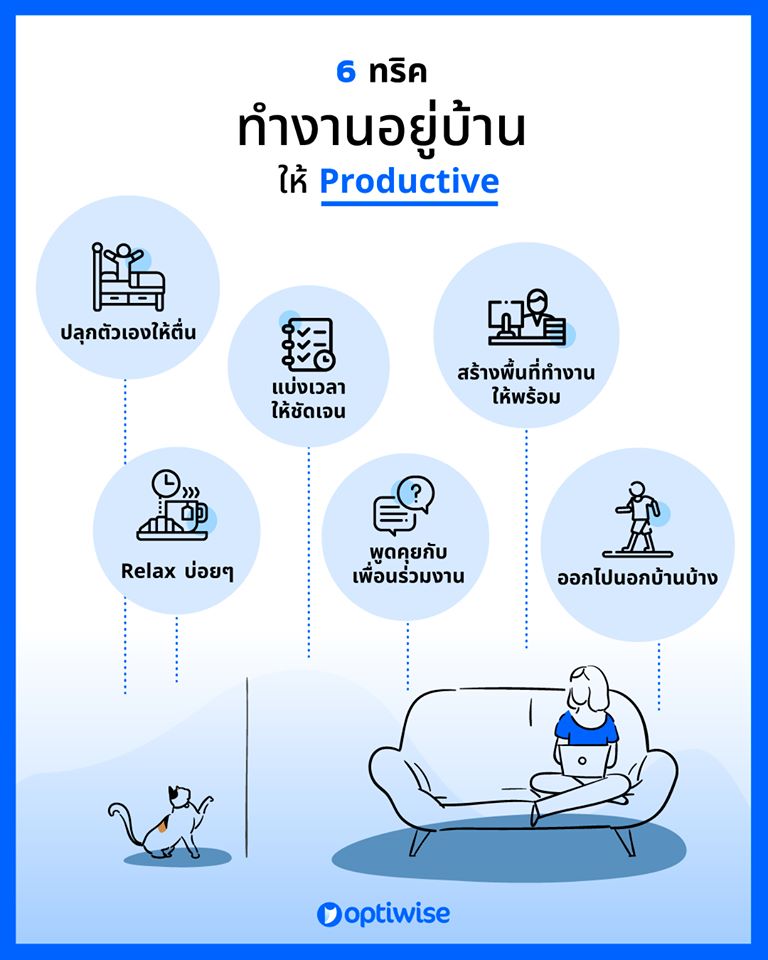What is TCFD? Get to Know the International Standards for Climate Risk Disclosure

TCFD, or the Task Force on Climate-related Financial Disclosures, is a framework for disclosing financial information related to climate-related risks and opportunities. It was established by the Financial Stability Board in 2015 to help organizations systematically manage climate risks, enhance transparency in reporting, and support the transition to a low-carbon economy. The framework has gained wide international recognition, including in Thailand, where regulatory authorities encourage companies to adopt its guidelines to promote long-term sustainability.
What is TCFD?
TCFD stands for the Task Force on Climate-related Financial Disclosures, an initiative established in 2015 by the Financial Stability Board (FSB). Its primary objective is to develop a voluntary and consistent framework for disclosing climate-related financial information. This framework enables companies to provide useful data to investors, lenders, insurers, and other stakeholders.TCFD has become increasingly important as climate change intensifies and affects all sectors of society. The world is now transitioning toward a low-carbon economy, prompting the financial sector to adapt by increasing support for low-carbon businesses, reducing support for high-carbon ones, and facilitating the transition of existing businesses toward lower carbon emissions. TCFD helps financial institutions assess and make informed decisions that consider climate-related risks and opportunities.
Globally, the TCFD framework has gained widespread recognition, with G20 countries and leading international organizations adopting it for climate-related disclosures. In Thailand, the Securities and Exchange Commission (SEC) and the Bank of Thailand have consistently encouraged listed companies and financial institutions to adopt TCFD-aligned disclosure practices. The SEC has also published a Thai-language version of the TCFD Recommendations to promote understanding and implementation within the Thai business sector.
Implementing the TCFD framework is not only a step toward aligning with international standards but also a strategic move to prepare for future regulatory requirements and to build long-term business sustainability.
The Role and Importance of TCFD
The Task Force on Climate-related Financial Disclosures (TCFD) plays a crucial role in enhancing the reporting and disclosure of sustainability information, particularly regarding climate-related issues. The TCFD framework enables organizations to systematically identify, assess, and manage risks and opportunities related to climate change, ultimately leading to more effective business decision-making.
In terms of challenges, organizations face the difficulty of assessing the financial impact of climate-related risks, which often involve a high degree of uncertainty. These include physical risks, such as increasingly severe natural disasters, and transition risks, such as changes in environmental policies and regulations. Nevertheless, adopting the TCFD framework also presents opportunities for organizations to identify new business prospects, such as the development of environmentally friendly products and services.
TCFD's Importance to Various Stakeholders
- Investors: Gain access to transparent and comparable information about climate-related risks and opportunities, supporting investment decisions that prioritize long-term sustainability.
- Regulators: Are better equipped to assess risks to financial stability arising from climate change, leading to the development of appropriate policies and regulations.
- Customers and Society: Receive insights into an organization’s environmental commitments and actions, influencing their choices of products and services.
- Employees: Gain a clearer understanding of the risks and opportunities the organization faces, as well as the strategies in place to address them—factors that can affect job security and the development of future-relevant skills.
Key Components of the TCFD Reporting Framework
The Task Force on Climate-related Financial Disclosures (TCFD) has developed a disclosure framework consisting of four key components to help organizations effectively communicate climate-related risks and opportunities.
1. Governance
Organizations must disclose information regarding the governance of climate-related risks and opportunities, covering the following aspects:- The role of the board in overseeing climate-related issues
- The role of management in assessing and managing climate-related risks and opportunities
2. Strategy
Organizations must disclose the actual and potential impacts of climate-related risks and opportunities on their business, strategy, and financial planning. This includes:
- Climate-related risks and opportunities identified over the short, medium, and long term
- The impact of these risks and opportunities on the organization’s business, strategy, and financial planning
- The resilience of the organization’s strategy under different climate-related scenarios
3. Risk Management
Organizations must disclose how they identify, assess, and manage climate-related risks, with attention to:
- Processes for identifying and assessing climate-related risks
- Processes for managing those risks
- How these processes are integrated into the organization’s overall risk management framework
4. Metrics & Targets
Organizations must disclose the metrics and targets used to assess and manage relevant climate-related risks and opportunities, including:
- Metrics used to evaluate climate-related risks and opportunities
- Greenhouse gas emissions (Scope 1, 2, and 3, where applicable) and associated risks
- Targets set to manage climate-related risks and opportunities, and performance against those targets
Climate-Related Risks
Climate risk is a critical issue that organizations must consider when preparing a TCFD (Task Force on Climate-related Financial Disclosures) report. These risks are broadly divided into two main categories:
1. Physical Risks
Physical risks stem from the direct impacts of climate change and can be divided into:
- Acute Risks: These include events such as floods, severe storms, and wildfires, which may cause damage to assets and disrupt business operations.
- Chronic Risks: These refer to long-term changes such as rising sea levels, altered rainfall patterns, and prolonged heatwaves, which may affect supply chains and production efficiency.
2. Transition Risks
Transition risks arise from the shift toward a low-carbon economy and include:
- Policy and Regulatory Risks: For instance, carbon taxes or greenhouse gas reduction targets may increase operating costs or limit growth in certain sectors.
- Technological Risks: The emergence of clean technologies may render existing ones obsolete, affecting an organization's competitiveness.
- Market Risks: Changes in consumer behavior toward more environmentally friendly products and services can impact demand.
Business and Investment Opportunities
While climate change poses challenges, it also opens up new business opportunities, including:
- Developing environmentally friendly products and services such as renewable energy, electric vehicles, or energy-efficient construction materials.
- Enhancing resource and energy efficiency to reduce long-term operating costs.
- Accessing green finance, which often comes with more favorable interest rates.
- Building a positive reputation and credibility among stakeholders.
Effectively assessing and managing climate-related risks and opportunities not only helps organizations navigate future challenges but also adds value to the business and supports a sustainable transition to a low-carbon economy.
Benefits of Using TCFD
The adoption of the TCFD (Task Force on Climate-related Financial Disclosures) framework brings multiple benefits to stakeholders across the financial system and broader economy.
1. For Investors and Financial Institutions
- More Accurate Risk Assessment: Disclosures aligned with TCFD allow investors to better evaluate climate-related risks and opportunities, leading to more efficient capital allocation.
- Improved Investment Decisions: Investors can use TCFD-based data to compare companies within the same industry, enabling more informed investment decisions that account for long-term sustainability
- Development of New Financial Products: Financial institutions can leverage TCFD data to develop climate-related financial instruments, such as green bonds or funds focused on low-carbon businesses.
2. For Businesses
- Effective Risk Management: TCFD helps organizations systematically identify, assess, and manage climate-related risks, enhancing their ability to prepare for future impacts.
- Business Opportunities: TCFD-driven analysis enables companies to identify climate-related business opportunities, such as developing environmentally friendly products and services.
- Enhanced Credibility: Disclosing climate-related information under the TCFD framework boosts an organization's credibility with investors, customers, and other stakeholders by demonstrating commitment to managing climate risks and opportunities.
3. For Policymakers and Regulators
- Assessing Risks to Financial Stability: TCFD data helps regulators better evaluate climate-related threats to financial stability, informing the development of appropriate policies and regulations.
- Supporting National and Global Goals: Implementing the TCFD framework supports the achievement of Sustainable Development Goals (SDGs) and the greenhouse gas emission reduction targets under the Paris Agreement.
- Promoting Market Transparency: TCFD enhances climate-related disclosures in capital markets, enabling regulators to promote greater transparency and market efficiency.
Implementing TCFD in Organizations
Implementing the Task Force on Climate-related Financial Disclosures (TCFD) framework within an organization requires collaboration across departments and careful planning. The key steps include:
1. Establishing Internal Governance
- Set up a cross-functional working group with representatives from departments such as finance, risk management, sustainability, and operations.
- Clearly define the roles and responsibilities of the board of directors and senior executives in overseeing climate-related issues.
- Develop internal policies and processes to integrate climate risk management into the organization’s overall risk management framework.
2. Risk and Opportunity Assessment through Scenario Analysis
- Conduct a range of scenario analyses, including scenarios where global temperatures rise by 2°C and 4°C.
- Identify and assess the financial impacts of climate-related risks and opportunities over the short, medium, and long term.
- Consider both physical risks (e.g., natural disasters) and transition risks (e.g., policy and technology changes).
3. Data Collection and Analytics
- Develop systems for collecting data related to greenhouse gas emissions and energy usage.
- Utilize digital tools and platforms to analyze data, monitor progress, and identify trends.
- Establish indicators aligned with international standards, such as the Science Based Targets initiative (SBTi).
4. Reporting and Stakeholder Engagement
- Prepare disclosure reports in accordance with TCFD recommendations, covering all four core elements
- Integrate climate-related information into annual reports and sustainability reports.
- Communicate transparently and consistently with stakeholders about the organization's progress in managing climate-related risks and opportunities.
- Arrange for external assurance to enhance the credibility of disclosures.
Effective implementation of TCFD requires strong commitment from top management, the cultivation of a corporate culture that values climate issues, and continuous capacity building among personnel. Organizations should view TCFD compliance not merely as a regulatory requirement but as an opportunity to foster long-term business development and sustainability.
Case Study: Applying TCFD in Organizations
Studying case examples and best practices from various organizations helps illustrate how TCFD (Task Force on Climate-related Financial Disclosures) can be implemented in practice.
Examples of Companies Successfully Applying TCFD
- Kellogg Company: This global food company has identified both physical and transition climate risks that affect its operations and business. Kellogg has analyzed the impact of climate change on its supply chain and key raw materials such as corn and wheat, and developed adaptation strategies. These include investments in climate-resilient agricultural technologies.
- Kasikorn Bank: One of Thailand's leading banks, Kasikornbank has disclosed 39 out of 60 TCFD-recommended disclosures, making it one of the most transparent in the country in this regard. The bank has set a target to reduce greenhouse gas emissions under Scope 3, which includes financed emissions, i.e., emissions from the bank’s clients. This reflects a strong commitment to managing climate-related risks comprehensively.
- EGCO Group: As a major Thai power producer, EGCO has disclosed information aligned with all four core elements of the TCFD framework. The company has conducted scenario analyses to assess potential impacts on its business and to define appropriate adaptation strategies.
Best Practices from International and Thai Organizations
- Integrating climate risk into enterprise risk management: Leading organizations have embedded climate risk assessment into their overall enterprise risk management (ERM) processes. This integration enables a more holistic and effective risk management approach.
- Utilizing scenario analysis: Organizations that have successfully implemented TCFD often carry out diverse scenario analyses to evaluate the financial impacts of climate-related risks and opportunities over the short, medium, and long term.
- Setting clear and measurable targets: Top-performing companies tend to set science-based targets (SBTs) for greenhouse gas emissions reductions. They also monitor and report progress regularly.
- Engaging stakeholders: Successful organizations actively communicate and collaborate with various stakeholders—such as customers, suppliers, and investors—to jointly manage climate risks and seize opportunities.
- Building internal capacity: Leading organizations invest in ongoing education and training for their staff to deepen understanding of climate change and ensure effective TCFD implementation.
TCFD and Its Link to Other ESG Standards
The Task Force on Climate-related Financial Disclosures (TCFD) is closely aligned with other sustainability reporting standards and frameworks. This alignment enables organizations to effectively integrate climate-related disclosures into their broader ESG (Environmental, Social, and Governance) reporting.
Connections with Other ESG Standards/Frameworks
- SASB (Sustainability Accounting Standards Board): SASB focuses on financially material sustainability disclosures for specific industries. TCFD and SASB are aligned in their emphasis on financially relevant information. Organizations can use SASB standards to identify industry-specific metrics that support TCFD-aligned reporting.
- GRI (Global Reporting Initiative): GRI provides a comprehensive framework covering environmental, social, and governance issues. TCFD aligns with GRI particularly in the area of environmental disclosures, especially those related to climate change. Organizations can use GRI as a foundation for overall sustainability reporting and supplement it with TCFD disclosures for climate-specific topics.
- ISSB (International Sustainability Standards Board): The ISSB has developed sustainability disclosure standards, IFRS S1 and S2, which incorporate TCFD recommendations. Organizations that comply with IFRS S1 and S2 are also considered to be in alignment with TCFD, enhancing both the consistency and comprehensiveness of their disclosures.
Guidelines for Cross-Standard Communication
- Develop a Mapping Table: Create a table that maps TCFD requirements to those of other standards such as SASB, GRI, and ISSB. This helps readers understand the consistency and coverage across different reporting frameworks.
- Use Cross-Referencing: Within the TCFD report, reference related sections in other reports to minimize redundancy and enhance information connectivity.
- Integrate Reporting: Consider producing integrated reports that combine disclosures from various standards, using TCFD as the core framework for climate-related information.
- Leverage Digital Tools: Utilize technology platforms to manage and present data flexibly across multiple standards, enhancing accessibility and user experience.
- Enhance Stakeholder Understanding: Provide explanatory materials or guides to help stakeholders understand the relationships between different standards and how to interpret integrated reports.
Future Trends of TCFD
TCFD (Task Force on Climate-related Financial Disclosures) is poised to play an increasingly important role in the future, as climate change intensifies and impacts the global economy and society at large.1. The Role of TCFD in a Rapidly Changing Climate Landscape
TCFD will serve as a key instrument in driving the transition to a low-carbon economy. It enables organizations to effectively assess and manage climate-related risks and opportunities. Disclosing information in line with TCFD recommendations enhances transparency and credibility in the eyes of investors and stakeholders, ultimately facilitating the allocation of capital toward low-carbon initiatives.
2. Emerging Policies and Regulations
A major trend is the growing mandate for TCFD-aligned disclosures across various countries, including Thailand. The Securities and Exchange Commission of Thailand (SEC) has actively promoted TCFD-aligned disclosures among listed companies. It is anticipated that in the near future, the SEC may require large listed companies to comply with TCFD disclosure standards.
Moreover, the IFRS Sustainability Disclosure Standards, namely IFRS S1 and S2—which incorporate TCFD recommendations—are expected to gain widespread global acceptance. This could establish TCFD as the international benchmark for climate-related financial disclosures.
3. Opportunities for Expanding TCFD Across Industries
Although TCFD originated in the financial sector, its framework has strong potential to be applied across a wide range of industries, particularly those with high greenhouse gas emissions or those significantly affected by climate change. These include the energy, transportation, and agricultural sectors.
For instance, EGCO, a leading Thai electricity producer, has adopted TCFD for climate risk analysis and disclosure. This demonstrates how the framework is expanding into the energy sector, which plays a crucial role in reducing carbon emissions.
Looking ahead, TCFD guidelines are expected to evolve into industry-specific frameworks, making disclosures more relevant and actionable. Additionally, the integration of digital technologies and artificial intelligence in TCFD reporting will enhance the efficiency and accuracy of climate risk and opportunity
CFD will be central to advancing the transition to a low-carbon economy. As the global standard for climate-related disclosures across all sectors, organizational preparedness and adaptation to TCFD principles will be vital for long-term sustainability and competitiveness.
Conclusion and Additional Resources
The Task Force on Climate-related Financial Disclosures (TCFD) plays a crucial role for businesses and society in addressing climate change. It enables organizations to effectively identify, assess, and manage climate-related risks and opportunities. Disclosing information in accordance with TCFD guidelines enhances transparency and credibility, empowering investors and stakeholders to make more informed decisions.Organizations should accelerate their adoption of TCFD, as many countries, including Thailand, are moving toward mandatory disclosure aligned with these guidelines. Thailand’s Securities and Exchange Commission (SEC) has consistently encouraged listed companies to follow the TCFD framework. Early adoption helps organizations prepare for future regulatory requirements and gain a competitive edge in the market.
The future direction of TCFD is expected to focus on expanding its application beyond the financial sector, particularly to industries with high greenhouse gas emissions or those significantly impacted by climate change. Moreover, integrating TCFD with other sustainability reporting standards—such as ISSB IFRS S1 and S2—will promote greater alignment and comprehensiveness in climate-related disclosures on a global scale.
Key Resources and References for TCFD Include:
- Official TCFD Website: www.fsb-tcfd.org
- Thai-language version of the TCFD Recommendations Report by the Thai SEC
- TCFD Good Practice Handbook (Thai translation) by the Stock Exchange of Thailand
- Sustainability reports from listed companies on the Stock Exchange of Thailand that disclose information in line with TCFD guidelines
- Research studies and academic articles on the implementation of TCFD in Thailand and internationally
About Optiwise
Optiwise offers Investor Relations & ESG consulting services, corporate website design, and IR website development. We also provide advisory services for initial public offerings (IPOs) and assists in preparing disclosure documents for public companies. Additionally, our public relations efforts aim to build credibility and enhance the corporate image.
For more information about Optiwise's services, please contact us here.


